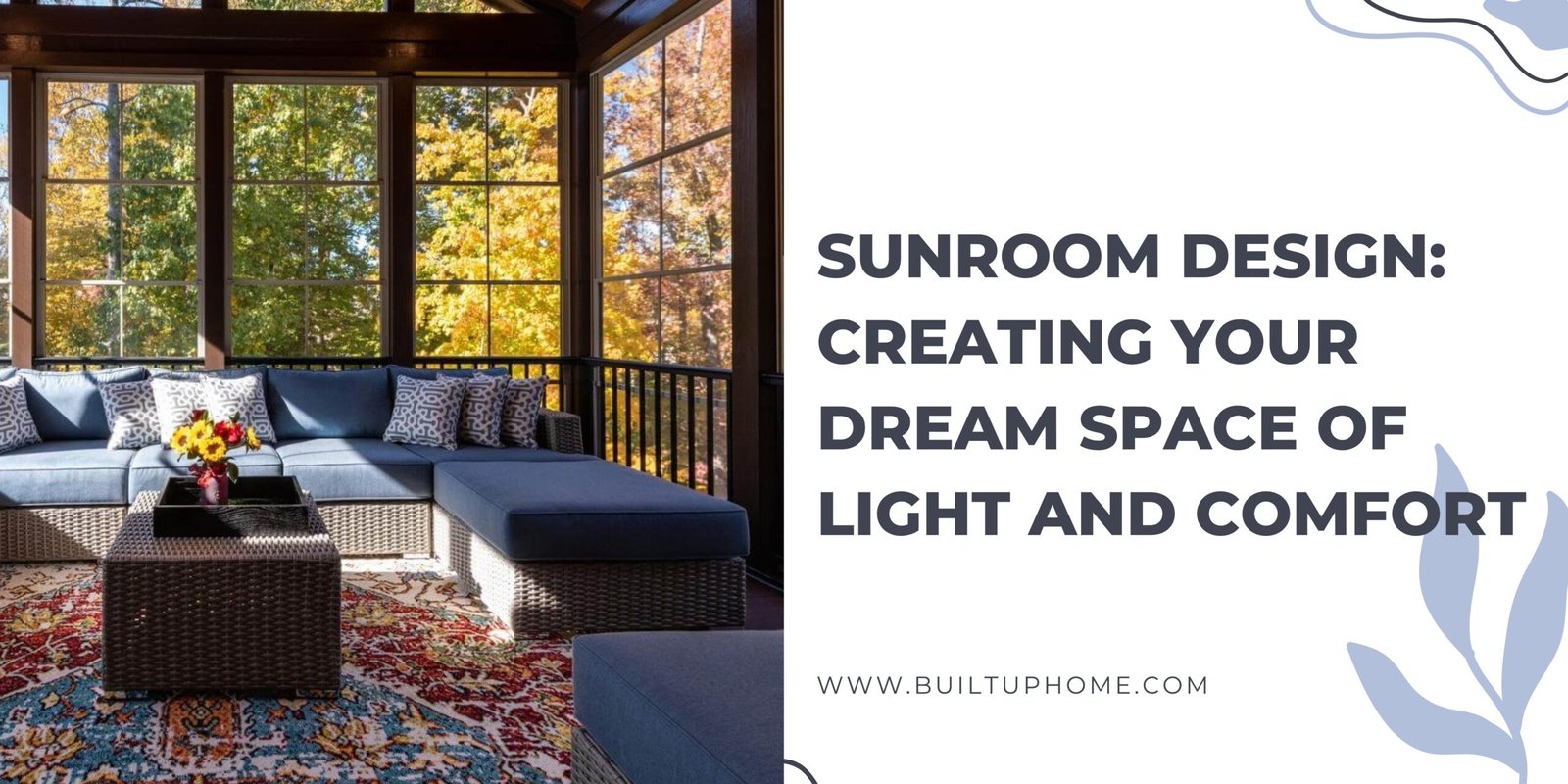Sunrooms—also known as solariums, sun porches, or garden rooms—are one of the most desirable spaces in a home. They bring the outdoors in, provide a relaxing sanctuary filled with natural light, and offer a versatile space that can serve as anything from a reading nook to a dining area, or even a home office. Whether you’re building a new sunroom or upgrading an existing one, thoughtful design can transform this room into one of the most cherished spaces in your home.
What Is a Sunroom?
At its core, a sunroom is a room that features extensive glass walls or windows, often on three sides, to let in ample sunlight and provide panoramic views of the outdoors. Depending on their insulation and whether they have heating or cooling systems, sunrooms can be classified as seasonal (three-season or four-season).
Three-Season vs. Four-Season Sunrooms
- Typically, three-season sunrooms are utilized in the spring, summer, and autumn. They may lack full insulation or HVAC systems and are best suited to milder climates.
- Four-season sunrooms, on the other hand, are fully insulated and often integrated with the home’s heating and cooling systems, making them usable year-round.
Planning Your Sunroom Design
Before diving into design ideas, it’s essential to consider a few fundamental elements:
1. Location and Orientation
Your sunroom’s location impacts its light exposure and comfort level during the day.
- South-facing sunrooms receive sunlight most of the day, making them ideal for colder climates.
- East-facing sunrooms are bright in the morning and cooler in the afternoon—perfect for breakfast rooms or morning meditation.
- Sunrooms that face west receive strong afternoon sunlight and might require shading options.
- North-facing sunrooms offer more diffused light and are cooler, which might be ideal in hot climates.
2. Size and Layout
The size should correspond with your intended use—whether it’s a cozy nook or a full-fledged extension of your living space. The layout should allow for comfortable movement, proper furniture arrangement, and a balanced visual flow.
3. Permits and Codes
Always check local building codes and obtain necessary permits, especially if you’re adding a new structure. This ensures safety and compliance with municipal requirements.
Read More About: Creating Your Dream Space of Light and Comfort.
Key Elements of Sunroom Design
1. Windows and Glazing
Windows are the heart of a sunroom. Choose high-quality, energy-efficient glazing to help regulate temperature and minimize UV damage to furnishings. Options include:
- Double or triple-pane glass
- Low-E (low emissivity) coatings
- Tempered or laminated glass for safety
Consider operable windows or sliding glass doors for ventilation.
2. Flooring
Sunroom floors should be durable and able to withstand temperature fluctuations and UV exposure. Popular choices include:
- Tile: Easy to clean and great for radiant heating.
- Engineered wood: Offers a warm appearance with better moisture resistance than solid wood.
- Vinyl or luxury vinyl plank (LVP): Affordable, durable, and UV resistant.
- Stained concrete: A modern, durable option, especially in minimalist designs.
3. Furniture
Choose lightweight, versatile furniture that doesn’t fade easily in sunlight. Wicker, rattan, metal, or treated wood pieces with UV-resistant cushions work well. Make sure the furniture suits the intended purpose—be it lounging, dining, or working.
4. Lighting
While sunrooms bask in natural light by day, don’t neglect evening ambiance. Consider:
- Overhead fixtures: Such as ceiling fans with lights or pendant lamps.
- Wall sconces: For soft, ambient lighting.
- Floor and table lamps: To create cozy reading spots.
- LED strip lighting: For modern, low-profile illumination.
5. Climate Control
If you plan to use your sunroom year-round, integrate climate control:
- Ceiling fans: Improve airflow and cooling in summer.
- Portable heaters or electric fireplaces: Add warmth in colder months.
- Mini-split systems: Provide efficient heating and cooling without ductwork.
- Thermal curtains or shades: Manage heat and privacy as needed.
Popular Sunroom Design Styles
Below are several design concepts to inspire your creativity:
1. Modern Minimalist
- Clean lines, neutral colors, and sleek furniture
- Floor-to-ceiling windows with minimal framing
- Polished concrete floors or light wood finishes
- Integrated smart lighting and climate control
2. Rustic Retreat
- Exposed wood beams and shiplap walls
- Earth-toned palette with natural textures
- Stone or wood floors, cozy throws and rugs
- Overstuffed chairs and soft lighting
3. Coastal Chic
- White or pale blue walls with light wicker furniture
- Nautical décor elements like driftwood, ropes, and sea glass
- Soft, breezy curtains and indoor plants
- Perfect for beach houses or creating vacation vibes
4. Vintage Garden Room
- Antique furniture and floral prints
- Hanging plants and wrought iron accents
- Painted brick walls or vintage tile floors
- A charming blend of old-world charm and nature
5. Bohemian Escape
- Eclectic furniture, vibrant colors, and layered textures
- Moroccan rugs, poufs, and lanterns
- Plenty of greenery and patterned textiles
- A creative, relaxed space for lounging and daydreaming
Decorating Tips for Your Sunroom
- Use plants: Add life and freshness with a mix of houseplants like ferns, fiddle leaf figs, and peace lilies.
- Add personal touches: Display artwork, books, and collectibles that reflect your personality.
- Keep it clutter-free: Open, airy spaces feel more inviting and relaxing.
- Use light-filtering window treatments: Sheer curtains or bamboo blinds provide privacy without blocking natural light.
Functional Uses of a Sunroom
Sunrooms can be so much more than just a sitting area. Here are some inspiring uses:
- Home Office: Ensure you work in natural light and can see outside.
- Reading Nook: Set up a comfy chair and bookshelf for a serene reading escape.
- Yoga or Meditation Space: A peaceful setting to relax and recharge.
- Breakfast Room: Enjoy your morning coffee with sunshine and birdsong.
- Entertainment Area: Host brunches, dinners, or game nights in style.
Conclusion
A sunroom is more than just an architectural feature—it’s a lifestyle enhancement. Whether it’s used for entertaining guests, unwinding with a book, or soaking in morning light, the right sunroom design can elevate your home’s atmosphere and value. From cozy rustic escapes to sleek modern lounges, the possibilities are as wide as the windows themselves.
By considering orientation, climate, materials, and style, you can create a sunroom that suits your needs and aesthetic. Let it be a space where light, comfort, and beauty come together—your very own indoor oasis.
Read More About: Built UP Home

